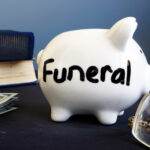Seven slender bones, chipped and splotched, some even burnt, lined up neatly on a table. A young boy with eyes wide open, they are bright and sparkling, he is dead and decomposing. A young woman with freckled cheeks, plump lips and a button nose; also dead.

Sally Mann’s photos of decomposing bodies are currently up at the Virginia Museum of Fine Arts, in Richmond. Her photography has been called “lewd” and “outrageous” by a former governor of Virginia.
A wolfish man with silver hair, lying face up on a soiled mattress. A naked man, face down in the dirt, his butt in the air, his body rotting. The photos feature dead bodies in various stages of decomposition, they are the work of Sally Mann, a Virginia photographer who uses an archaic form of photography known as wet-collodion to create haunting painting-like images. Once denounced by the governor of the state as “lewd” and “outrageous”, Mann’s prints now go for as much as $50,000 at top galleries like Gagosian. Her new show, “The Flesh and The Spirit” opened two weeks ago at the Virginia Museum of Fine Arts, in Richmond.
Many of the death photos in the show are from a series called Matter Lent, which Mann photographed at the University of Tennessee’s Forensic Anthropology Center, a campus of fields, woods and labs where law enforcement agents and medical examiners study decomposing bodies. When the series was shown at Washington DC’s Corcoran Gallery in 2004 the New York Times’ photography critic called it “a violation of the privacy and the decency of the dead.” Several Years later, a group in Helsinki, Finland requested to the police that the photos be removed from an exhibit because they constituted an offense against human dignity—the photos were not removed. “In rejecting the artificiality and aversion that surrounds death, they serve as potent momento mori—traditional reminders of death’s inevitability that are also meant to sharpen appreciation of life,” said the Virginia Museum’s curator of modern and contemporary art.
Death is indeed powerful, said Mann in a recent interview, and serves as a “springboard” to appreciate life more fully. “There’s a moment where you look at those bodies and say, ‘that was a human being.’ That was someone who was loved, cherished, caressed.”
Mann is not the first photographer to train her camera on the dead. Arthur Fellig, better known as Weegee, was an Austrian-born photojournalist who became famous for the stark and gritty black and white photos of murder victims he snapped on the streets of New York City. He had a portable police-band shortwave radio, the only New York newspaper reporter in the city to have one (carrying one is now commonplace) and was typically the first person at the scene of a crime, often times even beating the cops there. Because he maintained a complete darkroom in the trunk of his car, a 1938 Chevy, he was able to get his photos to the papers well ahead of the competition. His shots are gruesome; bodies mangled in car wrecks, victim’s sprawled on the sidewalk, brains splattered from bullet holes in the head and clothes soaked in pools of blood.
His photos, shot during the 1930s and 1940s, are pure tabloid, note critics, quick, vulgar, sensationalized shots. Weegee was recently described by one journalist as a “hard-boiled, courageous, ruthless man with amazing stamina for confronting tragedy. He was usually dressed in a rumpled suit and tie, with a fedora and overcoat, its pockets stuffed with notebooks and flashbulbs. A large cigar hung permanently from his mouth, and his chin often sported a day’s growth of stubble.”
But Weegee also saw himself as an artist, early on his photos were displayed in New York City’s prestigious Museum of Modern Art. His photos represented something powerful and spontaneous, noted photographer Vicki Goldberg: “People turn, collapse, struggle, flee. Emotions are snapped as they burst: fear, anguish, shock, despair, anger. What a polite society keeps private spills out in emergencies, and Weegee unsparingly records it.”
Much of Mann’s criticism has come from the very private photos she has taken of her family, such as the shots of her prepubescent daughters in daring and provocative poses. Lately she has focused her camera on her husband Larry, who was diagnosed with adult-onset muscular dystrophy in 1997. A series included in the Virginia Museum show called Proud Flesh traces the disease’s debilitating effects on him. “Larry’s condition has given me a new awareness of mortality and life’s fragility,” says Mann. “We don’t get to choose how we die.”









